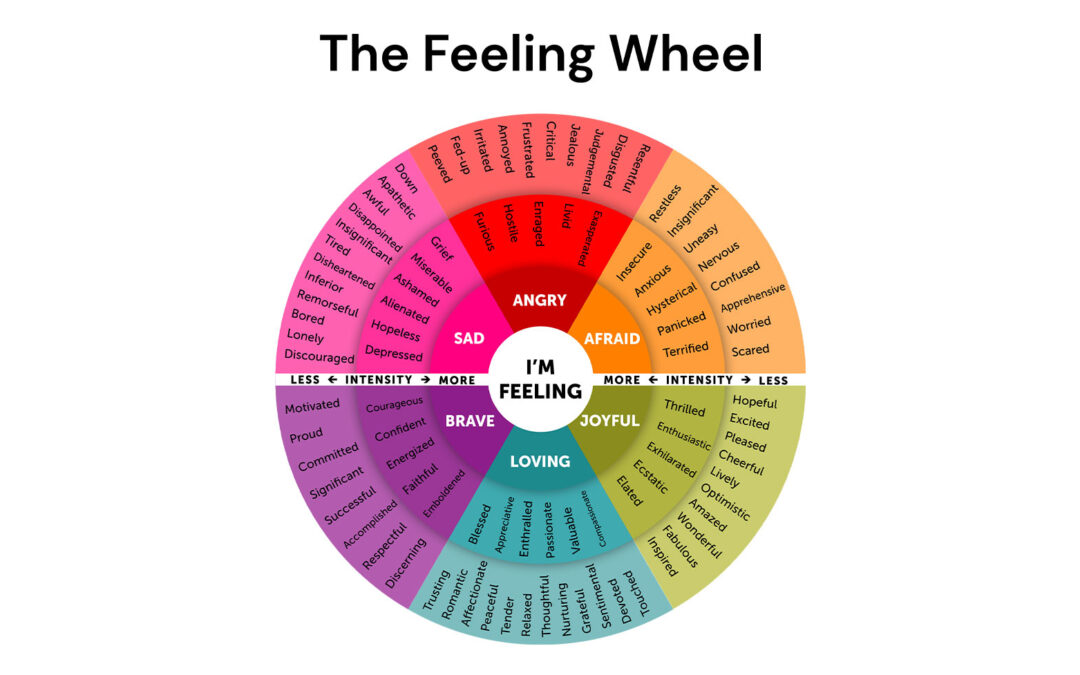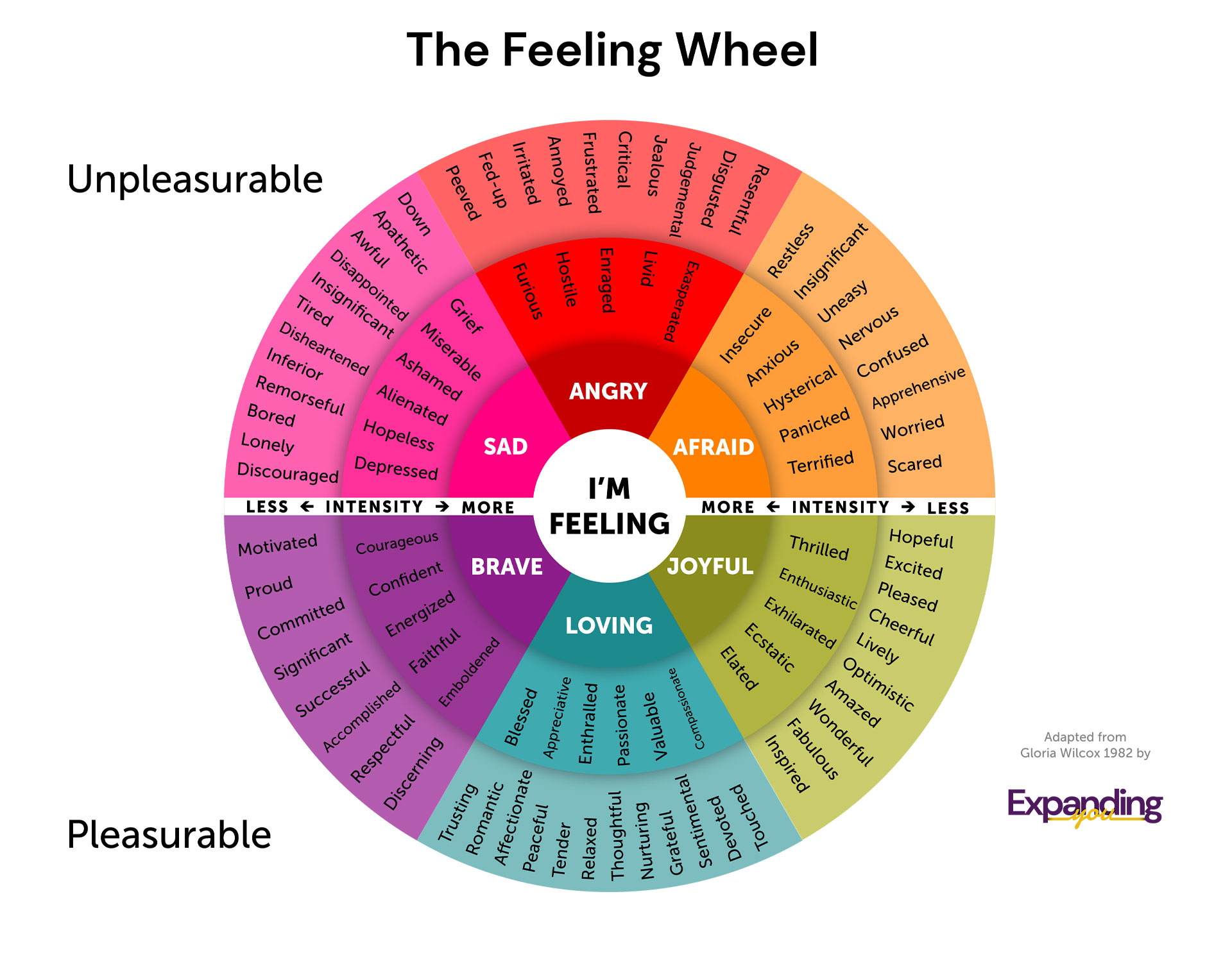
Emotions, Growth, Identity
Recently I watched The Life of Chuck… and I don’t even fully have words for how moved I am. It was profound, not in a flashy, intellectual, try-hard kind of way, but in the most simple, human, soul-level way. It wasn’t some blockbuster with special effects or gripping action. There’s no gory scenes or high-stakes thriller plot. It’s not trying to impress you. It’s just real. Quietly powerful. Deeply emotional. And brilliantly done.
What struck me first was how the story unfolded. It begins at the end, literally. Then moves backward through time: scene three, then two, then one. And it works. It actually makes you feel something different. By the time it ends on scene one, everything comes together in this slow, subtle, almost sacred way. You’re not told what to feel, you just feel it. And it’s beautiful.
What pulled me in was its simplicity. It’s not loud. It’s not grandiose. It’s a story about a man’s life but really it’s a story about all of our lives. About being alive and the moments we take for granted. The ordinary ones. The ones where nothing “important” is happening, but something extraordinary is available if we’re present enough to notice it. Like a spontaneous dance. A small yes to something you usually say no to. A shared silence. A smile. A sunset.
And what hit me even deeper was how the movie reminds us that the universe is always working in our favor, even when we can’t see it. It’s not random. There are clues, breadcrumbs, invitations everywhere. In this story, there are moments when something from Chuck’s past gets pulled into his present, like life is stitching together the timeline of his soul. Not to fix but just to illuminate it. To say, “Look, even that mattered.” These are the moments that give context to the chaos. That remind us something bigger is unfolding and always has been.
It reminded me of what we teach at Expanding You, that the point of all this, the real point, isn’t some perfect, productive version of life. It’s aliveness. Presence. Appreciation. The moment when you’re not in your head trying to fix or protect or perform but simply being. Connected. Awake. Free.
And yet, it’s so hard to stay there.
So often, my mind is busy judging, comparing, predicting, protecting… doing all the things it was trained to do. Trained by fear, by programming, by all the bullshit I inherited or absorbed along the way. It robs me, and steals the aliveness that is right there. Always right there. The dance. The joy. The breath. The wonder. The moment.
But sometimes, in rare beautiful flashes, we say yes. We take the risk. We override the fear. We open our heart instead of protecting it. We walk down a road we think is a dead end, and find something magical waiting there. That is where life happens, and those are the moments that touch our soul.
God, I’ve had those. In my travels, in unexpected conversations, in moments I almost said no to but didn’t. I’ve been down streets in foreign countries that looked like nothing… and then turned a corner into something I’ll never forget. Or opened up in a moment when I could’ve stayed shut down… and something true and beautiful unfolded. That spontaneous abandon, where you leap before your fears can stop you, those are the moments the soul never forgets.
It’s almost like the universe dares us: Will you trust life enough to keep going anyway?
When the mind finally does go quiet, and the heart opens, you see differently. You feel differently. You are different. And it’s so pure. Divine, really. This movie captured that so elegantly.
It also mapped something we talk about so often, the inner world we carry from childhood. The movie shows how our experiences build entire universes inside of us. Multiverses even. One line that really got me was: “I am wonderful, and I deserve to be wonderful.” That truth, that realization… it cracked me open.
What if that were the core of who we knew ourselves to be? What if that was what we built life on, not fear, not performance, not protection, but wonder and worthiness?
There’s a bittersweet ache I feel even as I write this. The longing to live from that place more fully. The sadness of all the times my conditioned mind blocks me. The heartbreak of how often fear still wins. The fear of being wrong, looking stupid or messing up. And how often that fear shrinks me, tightens me, dims me down. But underneath it all, there’s this quiet, strong longing, this yes inside me. I want to live with wonder, with aliveness, with joy. I want to embody it, share it, and awaken it in others.
And I want that for the people I work with too. For them to see the constructed identity for what it is, not bad, not wrong, just an outdated operating system filtering for protection, and to gently let it keep falling away. To discover that underneath it all, there is something wonderful, something wildly alive.
This movie reminded me again: The best moments in the universe are the simple ones. The real ones. And we’re already in them… if we’re willing to be here. And maybe even more so, if we’re willing to take the risk to go there, with spontaneous abandon and a heart wide open.

Emotions, Growth

What cards, consciousness, and competition taught me about living from the Authentic Self
For ten years, I sat at the felt-covered tables of casinos and card rooms across North America, playing poker for a living. It was a strange career, equal parts thrilling, punishing, and psychologically revealing. I was in my 30s, and while I thought I was playing the game, I later realized the game was also playing me.
Now, after a decade immersed in personal transformation, nervous system healing, and spiritual realization, through the work that’s become Expanding You, I’ve come to see how deeply poker mirrors life. And more importantly, how most of us are still playing life like it’s poker: high-stakes, high-stress, trying to outmaneuver others so we can finally feel safe, seen, or significant.
But what if there’s another way to play? One that doesn’t require the bluff, the edge, or the internal war?
Let’s talk about that.
In the Hand or Out of the Hand: Blind Spots and Embodiment
One of the simplest but most powerful lessons poker taught me was this: everything feels different depending on whether you’re in the hand or watching the hand.
When you’re in the hand, meaning you’re one of the players involved in a big pot, making decisions with real money on the line, your nervous system is activated. There’s pressure, risk, and the unknown. You’re evaluating opponents, trying to read patterns, questioning your own reads, managing fear, and making bets that could cost you.
But if you’re out of the hand, just watching from the sidelines, it’s all obvious. You see who’s bluffing. You know who’s strong. You can tell who’s panicking. Your nervous system is calm, and your clarity is high.
And man, if that isn’t personal development in a nutshell.
Most of us are in the hand with our own pain, coping strategies, and unconscious stories. When we’re emotionally activated, caught in a fight with a partner, spiraling about money, or stuck in people-pleasing mode, we lose access to clarity. Our perception narrows. We don’t see clearly because our nervous system isn’t regulated.
Meanwhile, the people around us (if they’re regulated) can often see our patterns more clearly than we can. “You always shut down when things get vulnerable.” “You’re trying to control again.” “You’re scared and avoiding.”
But we resist. We’re defensive. We justify. Because we’re in the damn hand. And it feels real.
This is why embodiment and emotional regulation are at the heart of Expanding You’s Inner Balance work. You can’t think your way out of being “in the hand”. You have to learn how to be with your system, create internal space, and come back to your seat at the table, not to win the pot, but to reclaim your center, your empowerment.
Know the Rules. Then Break Them With Mastery.
I often say this about poker:
“First, you learn the rules. Then you learn how to break them, strategically.”
Same in life.
A beginner poker player learns how the hands rank. What beats what. When to fold. When to raise. A seasoned player doesn’t just follow the rules, they understand them so well that they can bend them to gain an edge. They know when to represent strength, when to trap weakness, when to bluff with nothing, and when to go all-in with air.
But here’s the twist: most people are playing life with that same mentality. They’ve learned the psychological “rules” of how to survive in their family system, school, or workplace. Be agreeable. Be strong. Be smart. Don’t show too much. Don’t be too emotional. Don’t lose.
Then, like a good poker player, they get strategic. They find the edges in others. They learn how to win arguments, negotiate power, and gain approval. They find ways to manipulate reality just enough to feel safe, loved, or significant.
But all of this comes from what I call your “Constructed Identity”, basically, the version of you that was shaped by past experiences, pain, and what you’ve been taught to believe about yourself. It’s protection mode…survival programming dressed up as “success.”
And just like poker, it’s all based on the illusion of control. You don’t control the cards. You don’t control the outcome. You only control how you show up to each hand, and who you become through it.
We’re taught from an early age, sometimes explicitly, sometimes subtly, that the world is a hostile place. “It’s a dog-eat-dog world out there.” “You’ve got to fend for yourself.” “Only the strong survive.”
It’s Darwin’s theory misapplied to human consciousness.
This thinking seeps into our relationships, our businesses, even our spiritual communities. We assume life is a one-winner game. That someone has to lose in order for us to win. That we must prove our worth, guard our vulnerabilities, and out-compete the next person or get left behind.
But that’s not how life actually works.
If you zoom out and look at nature, not just through the lens of predators and prey, but through ecosystems, you’ll see something radically different. Life thrives through interconnection. Bees don’t hoard all the pollen. Trees communicate through their roots to share nutrients. Wolves keep deer populations healthy. Everything is in relationship.
Life is not built on domination. It’s built on coherence.
When we believe we must dominate to survive, we’re still living from trauma. We’re in the Constructed Identity, operating from fear, protection, and separation.
But when we come into alignment with the deeper truth, that we are all part of one living, breathing system, we begin to see a different path.
“Humanity and the Earth are a team. They do not need to be divided.”
Winning by Making Others Fold: The Constructed Identity’s Favorite Game
Great poker players don’t just win with strong hands. They win by getting you to fold a better hand. That’s called skill. Or, in the business world, it’s called “strategy.” In marketing, it’s called “positioning.” In dating, “game.”
But if we’re honest, in life, it’s often called self-protection.
The Constructed Identity loves win-lose scenarios. It was built for them. As children, we learned to survive by being better than, less than, more liked, more quiet, more useful, whatever was required. The nervous system learned: If I win, I’m safe. If I lose, I’m not lovable. If I fold, I’m weak.
So what do we do? We spend adulthood trying to win every hand. We try to win at marriage. Win at spirituality. Win at healing. Win at Instagram.
Even in the personal development world, we’re bluffing with high-stakes language, acting like we’re “embodied” or “authentic” when we’re still terrified of being fully seen.
Lynn once asked me, “What’s a life lesson you’ve learned from poker?”
At first, I gave the usual response, pattern recognition, emotional regulation, risk tolerance. But then she pushed deeper. “How does it shape your view of the world?”
That’s when I saw it: poker is a zero-sum game. One person’s gain is another’s loss. There’s only one winner per hand.
That’s fine for a card game. But it’s a toxic operating system for relationships and life.
Too many people are still living with poker’s win-lose mentality. Find the weak spot. Exploit the gap. Beat the competition. Manipulate perception. Prove yourself. Build the edge.
We call this good business. Or good leadership. But it’s really just the Constructed Identity dressed up in a nice suit.
And this kind of leadership, let’s call it survival-based leadership, is everywhere. It’s competitive. Closed off. Opinionated. It leads by control, persuasion, or dominance. It’s not interested in understanding others; it’s interested in being right. In winning. And in being the smartest person in the room.
But authentic leadership is something else entirely.
Authentic leadership isn’t about being the best at knowing, it’s about being the best at listening. It doesn’t try to control people or outcomes. It invites curiosity. It holds multiple perspectives at once. It asks questions not to corner others, but to co-create something better.
This kind of leadership recognizes that truth isn’t a weapon, it’s a bridge. It builds trust. It allows the room to get smarter together. It shifts the room from competition to collaboration. From winning alone to rising together.
That’s a win-win-win game. That’s the kind of game the Authentic Self plays. (the truest expression of who you are, from your heart, before the fear, programming, and protective patterns took over.)
It doesn’t need to be the hero, or the one with the biggest stack of chips.
It simply wants everyone at the table to play a better game.
Play the Game Well, Even When You Don’t Win
(And why authentic risk is still worth it, every time.)
Here’s something every seasoned poker player knows:
You can play the hand perfectly, read the table, calculate the odds, stay emotionally grounded, make all the right moves, and still lose. The cards don’t always cooperate.
It’s the same in life.
Living in alignment with your Authentic Self, leading with love, being honest, choosing compassion, acting from clarity, doesn’t guarantee you’ll get the outcome you want. You might show up with total integrity, and still get misunderstood. You might offer your heart, and still get rejected. You might lead with wisdom, and still lose the hand.
But poker taught me something simple: you don’t measure your growth by how many hands you win. You measure it by how well you played, especially when the stakes were high.
And that’s where real risk-taking lives. Not in ego-driven bravado. Not in reckless leaps to prove your worth. But in sacred vulnerability, the kind of risk that says:
“I’m willing to be seen. I’m willing to tell the truth. I’m willing to love, even if I’m not met.”
That kind of risk isn’t loud or flashy. It won’t get you applause from the world.
But it will set you free.
The Authentic Self doesn’t avoid risk, it just chooses the kind that expands you, instead of the kind that contracts you. Risk becomes part of the path, not to manipulate an outcome, but to stay loyal to your heart.
In Expanding You, we often say:
“The outcome isn’t up to you. Your alignment is.”
So you risk showing up anyway. You risk being kind, even when others aren’t. You risk speaking up or asking the hard question, even if it makes you unpopular.
You risk loving first.
You risk letting go.
Because you know: the safest place to be is in full alignment with who you truly are.
That’s the deeper mastery.
When you stop playing life like a results-based game, and start playing it as an integrity-based path, something shifts. You show up with more peace. More openness. More grounded joy. You’re no longer gambling your self-worth on the next win.
You’re just here to play well, with a clean heart, a curious mind, and your whole being on the table.
What Game Are You Playing?
If you find yourself exhausted, always strategizing, chasing, comparing, proving… you’re probably still playing life like poker.
And that’s okay. We’ve all done it. We were taught that life is a tournament. That you need to get ahead. That someone else’s success means your loss. That vulnerability is a liability.
But there’s a deeper game available. It’s slower. Quieter. Richer. It doesn’t need to bluff. It doesn’t need to fold. It doesn’t even care what cards you’re holding, because it knows you are the prize, not the money or the recognition..
And in that game, everyone wins.
By Jeff Brown
Cofounder of Expanding You

Emotions, Growth
By Jeff Brown – co-founder of Expanding You
We were in round two of edits on the new Inner Balance trailer. Lynn and I had already given our feedback to the video editor, sent it off, and now here we were again, this time Leslie was here too, watching the new version together.
Leslie and Lynn had notes. They wanted more edits.
And while they spoke thoughtfully, my system tensed up. I felt a flicker of annoyance. Then impatience. My mind whispered: “Didn’t we already go over this? We asked the editors to make that change. It’s fine. It’s good enough. Let’s move on.”
Recognizing old emotional programming in everyday reactions
In the past, I might’ve let those feelings drive the next move. I might have tried to steer the conversation toward settling. But that’s not what happened this time.
This time, I caught it.
That flicker of frustration? It was the signal that told me to pay attention and notice I was out of balance. Not because of the situation, but because of what was stirring inside me.
So I turned my attention inward. What’s really going on here?
First, I took a moment and gave myself permission to feel my feelings. In the past, I would have skipped over my feelings entirely and gone right to getting the job done. Instead, I followed the thread of my annoyance into my past, and it took me right back to childhood. My dad’s voice echoed in my head, impatient, always rushing, never fussed about details. “It’s fine. Just leave it. Doesn’t matter.” Saving time mattered more than getting it right.
And layered on top of that? My mom’s quiet concern. “Don’t ask again. It’s rude. You’re being a burden.”
Ah. There it was. My dad’s belief that “saving time matters more than getting it right” conflicts with my mom’s belief of “don’t be a burden”. I was embodying the beliefs of my parents and tying myself up in knots.
How old emotional programming shapes our present behavior
At Expanding You, we teach that all behaviour is internally motivated. Knowing this, I was able to turn inward and recognize my struggle was old programming and emotional wounds running inside of me, it wasn’t about the trailer video edits.
And now I had a choice: stay in it, or shift out. So I named it out loud to Lynn and Leslie.
“I’m noticing I’m feeling frustrated, and I’ve got some old programming showing up here. I can hear my dad’s voice, that urge to just wrap it up. And I can feel that pressure from my mom’s message that we shouldn’t ask for more.”
Bringing it into the light took the charge out of it.
From resistance to authentic alignment
Then I anchored into the facts:
- This trailer is going on our website and into our marketing. I want it to be the best it can be.
- We’re paying our editors by the hour. So what if there are more edits?
- We weren’t as clear as we could’ve been the first time. That happens. Let’s just fix it now.
From there, my system started to settle. I moved from resistance to receptivity. From internal conflict to clarity. From annoyance to something softer, collaboration. These are the skills we introduce in the Inner Balance program.
By naming the beliefs and programming that were running, and choosing truth over the old narrative, I shifted in real time. This shift is a healing moment where I consciously break free from an old, unhealthy unconscious pattern that was programmed many years ago. That’s the power of the work we do at Expanding You.
Was I suddenly elated? No. And that’s important to note. Even after the mental shift, the emotion takes a moment to catch up. I wasn’t in a full state of joy, but I was out of resistance. My heart, I’d say, was at a 3 out of 5. Open. Connected. Not ecstatic but present, grounded.
I could feel myself land back into my body. Not just understanding the shift intellectually, but feeling it. That’s the move from my constructed identity, that version of me that was unconsciously rooted in protection and fear, to embracing my courageous, authentic self, the version of me grounded in love and presence. What I could have easily labelled as a micro-moment of regulation was in fact a healing experience.
This is what transformational work looks like. Leaning into everyday moments, noticing the layers of beliefs and programming informing my behaviour and choosing differently.
Tracking a real-time inner transformation
In Expanding You, we track this shift using the lineage of behavior:
Programming → Beliefs → Thoughts → Feelings → Actions → Experience
In that moment, I walked the chain backward. From the experience (impatience during edits), I tracked it to the action I was about to take (push to move on), the feeling behind it (irritation), the thoughts fueling that (this is fine, this is a waste), the beliefs under that (asking for more is rude, perfect isn’t worth the time), and finally the programming it all stemmed from.
And by seeing it, by owning it, I got to choose something different.
The deeper truth?
It’s not too much to ask for what you want. It’s not wrong to revisit something to make it better. And it’s definitely not more noble to settle for “good enough” when your vision is calling for more.
So we created and sent a list of the new edit suggestions. Not from fear or overthinking, but from presence. When I showed up this way, I felt connected, confident, and my self-esteem increased.
This is what it looks like to apply the work. Not just in the big moments of life, but in the sometimes subtle, everyday ones where our nervous systems get activated and our old programs or emotional wounds try to steer the ship.
This moment wasn’t a breakdown. It was an invitation for a breakthrough. And I said yes.

Emotions
This blog is based on a conversation with Lynn Sumida and Jeff Brown, founders of Expanding You.
“We celebrate our ability to create machines that move as man, yet we
take for granted the miracle that is the human body.”
~ David Alejandro Fearnhead
I was speaking with a friend this morning who told me about a new car she got to drive last weekend. She excitedly shared some of the features that modern vehicles have, like blindspot checkers, newfangled warning systems and, well – comfortable seats.
I shared in her excitement and found myself thinking about how eagerly I track advancements in virtual technology, awaiting the day where it becomes possible (and affordable) to have virtual experiences that feel almost “like real life.”
Celebrating technological wonders like these is a beautiful thing. For me personally, it is a regular source of awe and inspiration in my life. As human ingenuity transforms the world every day through these advancements, I encourage you to transform along with it, through a simple practice: every time you find yourself impressed by a new device or discovery in the world, take that moment as an invitation to find wonder in yourself, as well.
The next time you hear about a wild new step for artificial intelligence, pause to marvel at how automatically that same or even greater intelligence operates in you. When the next Boston Dynamics video shows backflipping and dancing robots, do a little shimmy for yourself and recognize the millions of years of evolution that brought those abilities to you, too.
If you’re having trouble coming up with an amazing human ability, Expanding You recommends one to celebrate: your system of emotions. Long before Ford, Toyota, or Subaru, it was Humanity™ that developed a powerful blindspot checker called emotion. But this system is often neglected and underutilized, much like an unused turn signal, which can lead to uncomfortable results.
For many of us, emotions are something we rigorously try to control, or something which suddenly overrides us. Often it is a piece of ourselves that can be difficult to understand or talk about. There is a lot of conditioning that can cause this – perhaps you’ve been told to “suck it up” or been accused of being overly sensitive.
Or maybe you’ve seen displays of emotion that felt threatening or uncomfortable, and now you link those emotions with discomfort.
What often results from this is an unwillingness to engage with certain types of emotions; for me, anger was that emotion. For a long time, I would almost immediately repress anger as it arose. Growing up, I had not seen anger as an emotion that could be resolved calmly or compassionately, and thus decided (subconsciously) that it was not to be trifled with. But anger, as with all emotions, is a blindspot checker – one that arises when we think something should be different or that a boundary has been crossed.
When we suppress the angry voice within us, we build up a growing resentment for the people and systems that seem unjust. This unreleased energy may bring tension to your neck and shoulders, making it more difficult to relax and reducing your ability to actively participate in the world. This can lead you to either withdraw or explode when the resentment is triggered.
The Expanding You programs highlight an important aspect of emotions: they do not disappear when ignored. Much like the check engine light in your car, it is only by addressing the underlying issue that the warning light – our emotion – will turn off. So how do we address the underlying problem?
“When a problem is disturbing you, don’t ask, ‘What should I do about it?’
Ask, ‘What part of me is being disturbed by this?’”
~ Michael A. Singer
The next time you notice a shift in your emotions, pay attention to the sensations that go along with it. You can even practice right now – think of a recent frustration you had, and try to really embody the moment where you got frustrated. Now think of a recent disappointment in the same way. Now try a joyful moment, or a grateful one.
Pay attention to the subtle differences in how emotions are felt – this will help guide you to the deeper issue.
In fact, Jeff Brown and Monique Stefens of Expanding You have a tool for growing your awareness of feelings and your ability to label them:

The feeling wheel is a tool that has been around for decades, originally created by Gloria Wilcox, and provides powerful vocabulary for understanding our emotions. As you tune in to the sensations in your body, scan the wheel to find the words that identify your inner experience.
Despite the research and attention that some circles have given to the world of feelings, it has been reported that a majority of people use fewer than five feeling words to describe their internal experiences. In our view, the words “happy, sad, fine, good,” and “bad” don’t quite describe the depth or richness of the human experience.
In addition, many people are not in tune with their bodies and the sensations that correlate with those feelings.
Let’s say I notice a tightness in my gut when I recognize a person out in public, and I identify my feeling on the wheel as apprehensive. What I’m experiencing is a low intensity version of fear, which is in the category of AFRAID. What am I apprehensive about? I’ve forgotten this person’s name! Why does that cause apprehension?
Because I believe that I should remember peoples’ names after meeting them or that it’s disrespectful to not remember their name.
Notice what emerges as I label and explore my feelings. There is a thought about the way things should be; I should remember names. Multiple thoughts might arise together; “it’s rude of me to forget.
They were so nice when I met them… what if they think poorly of me for forgetting?” All feelings will have thoughts linked to them, and this is excellent news: because we have much more control over our thoughts!
Adding positive thoughts to the mix, like thinking “They’re probably nice enough to forgive me” or “being upfront and apologizing shows maturity and interest,” will bring pleasurable feelings.
Identifying the feeling, and then the thoughts attached to it, allows us to make a shift. By knowing what thoughts are hiding in our blindspots we can be more intentional about creating the experiences we want, using new thoughts that drive us towards empowered action.
I might go up and share from a new perspective: “hey, I really enjoyed talking to you the other day but I was so caught up in what you said that I forgot your name.”
Suddenly I find myself on the opposite side of the wheel, feeling respectful and accomplished for striking up a conversation and honoring my desire to remember their name.
The Expanding You programs encourage you to honor all of your emotions for the opportunities they present; they might highlight a call to action, or room for growth.
Recognizing and naming feelings allows us to better understand ourselves and gives us ways to communicate with those around us, creating closeness and deeper connection. Providing space for both pleasurable and unpleasurable feelings allows our hearts to be fully seen by those around us.
“Your heart is the light of this world. Don’t cover it with your mind.”
~ Mooji
If you’re not yet convinced of how marvelous this feeling system is, give it a try! Over the next week, check in with the wheel whenever you feel emotion in your body. If it’s easier, start with the pleasurable emotions – learn what thoughts guide you to joy, love, and bravery. Then see which thoughts turn up as sadness, anger, or fear.
For now, don’t worry about changing or using your emotions in any way – just get to know them and what they are trying to tell you. Oftentimes the insights you’ll find there will be enough to guide your next steps. But if you find you’re still stuck… let us know! The Feeling Wheel is only one of many tools we use to build emotional intelligence and channel the body’s natural strengths into growth and transformation, and we’re eager to share more of them with you. In fact, for a sneak peek into how feelings fit into the bigger picture of inner balance and resilience, we invite you to take a look at this brief lesson from our work and to reach out if it gives you any insights or questions.
Key words –
#Identity, #evolving, #transformation. #Personal growth, #being triggered, #emotional intelligence, #feelings, #feeling wheel, #emotions, #total behavior, #mental health, #core wounds, #emotional wounds, #triggered, #healing, #self awareness, #awareness, #trauma, #coping, #loss, #grief, #anxiety, #in control, #out of control, #stuck, #growth, #learning, #self improvement, #parenting, #leading, #leadership, #managing, #leader, #depression, #well being, #psychology, #emotion wheel, #emotional wheel,






